
The appeal of the Alaskan frontier lies in its unique blend of stunning natural landscapes, economic diversity, and the promise of a one-of-a-kind lifestyle. The state’s pristine wilderness, picturesque vistas, and access to outdoor activities, such as hiking, fishing, and wildlife viewing, make it a haven for nature enthusiasts. Beyond its breathtaking beauty, Alaska offers investment potential through its diverse property types, including cabins, waterfront homes, and urban dwellings. Anchorage and other urban centers boast a range of job opportunities in industries like healthcare, technology, and tourism, attracting a growing population. With a relatively stable real estate market, high per capita income, and the chance to invest in eco-friendly, sustainable housing, Alaska’s unique appeal is not only scenic but also financially rewarding for investors and residents alike.
New to passive real estate investing?
Explore Ark7 OpportunitiesWhy Are Real Estate Investors Interested in Alaska?
Real estate investors are always on the lookout for opportunities in emerging markets and hidden gems that promise a substantial return on investment. One such unconventional destination that has recently piqued the interest of real estate investors is the remote and majestic state of Alaska. While most investors typically focus on the continental United States, Alaska’s unique appeal has become increasingly attractive for those seeking to diversify their portfolios. Let’s explore the reasons why real estate investors are setting their sights on Alaska.
Natural Beauty
Alaska is often referred to as “The Last Frontier,” and it’s not hard to see why. The state boasts an unparalleled natural beauty that includes rugged mountain ranges, pristine lakes, glaciers, and abundant wildlife. The awe-inspiring landscapes and unique environment attract visitors from all over the world. This natural beauty is a significant factor that draws real estate investors to the state.
Investors are particularly interested in properties that offer scenic views, waterfront locations, or proximity to national parks. These types of properties have the potential to attract tourists and adventure seekers, making them highly profitable investments. Additionally, Alaska’s stunning landscapes make it a prime location for luxury lodges, resorts, and vacation homes, which can be lucrative investments in the state’s tourism-driven economy.
Outdoor Activities
Alaska is a haven for outdoor enthusiasts. The state’s vast wilderness offers a wide range of recreational activities, including hiking, fishing, hunting, skiing, snowboarding, dog sledding, and wildlife viewing. Real estate investors are keen to capitalize on the demand for vacation rentals, cabins, and lodges that provide easy access to these activities.
Furthermore, Alaska’s unique ecosystem provides opportunities for investments in eco-friendly and sustainable developments. For instance, eco-tourism ventures that promote responsible and ethical exploration of the state’s natural wonders are on the rise, attracting both domestic and international tourists.
Strategic Location
Alaska’s strategic location as the northernmost state of the United States is another factor that entices real estate investors. Its proximity to Asia and Europe makes it a crucial stopover point for international air travel and cargo routes, such as the Trans-Pacific air traffic. Alaska’s location at the crossroads of the world makes it a prime area for logistics and transportation infrastructure, which can be a lucrative avenue for real estate investment.
The state’s location also plays a vital role in trade and commerce, which has been steadily increasing in recent years. As international trade continues to grow, investors recognize the potential for industrial and commercial real estate developments in the state.
Alaska Employment Industries (Top 5)
To understand why real estate investors are flocking to Alaska, it’s essential to consider the state’s major employment industries, which provide valuable insights into its economic potential:
Oil and Gas: Alaska is known for its vast oil and gas reserves, and this industry has long been a significant contributor to the state’s economy. Real estate investors often focus on housing and commercial properties in cities with a strong presence in the oil and gas sector, such as Anchorage.
Tourism and Hospitality: Tourism is a vital industry in Alaska, with millions of visitors arriving each year to experience its natural beauty and unique culture. Real estate investments in the hospitality sector, including hotels, lodges, and vacation rentals, have been booming as a result.
Fisheries: Alaska’s fisheries industry is renowned for its seafood production, and it generates substantial employment and revenue. Real estate investors may consider properties located in areas with a thriving fishing industry.
Healthcare and Education: Healthcare and education are consistent sources of employment in the state. Investing in properties near hospitals, medical facilities, and educational institutions can yield stable returns.
Government and Military: Alaska hosts several military bases and government facilities. These installations provide a steady source of employment and create demand for real estate in nearby communities.
Alaska Housing Market Overview 2023
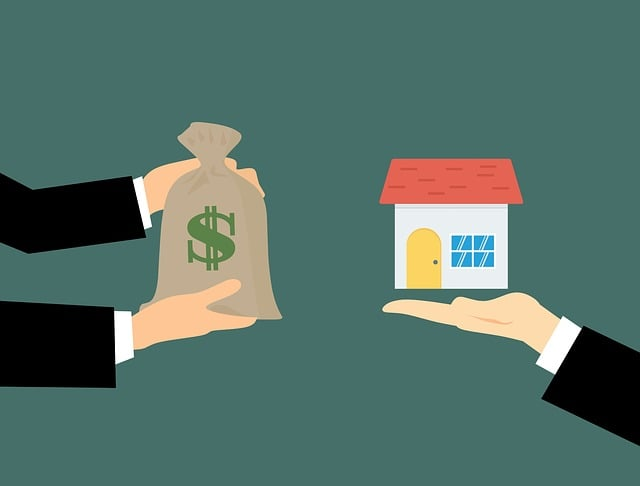
As of 2023, the Alaska real estate market presents a unique and dynamic landscape, shaped by a combination of economic factors, natural beauty, and demographic shifts. The Last Frontier’s real estate scene offers a diverse range of opportunities and challenges for both investors and residents. This overview delves into key aspects of the Alaska real estate market in 2023, providing insights into its current state and future prospects.
Steady Median Home Prices: The median home price in Alaska in 2023 remains relatively stable, hovering around the $350,000 mark (from Zillow). While this figure can fluctuate by location, with urban centers like Anchorage commanding higher prices and rural regions offering more affordable options, the overall consistency of median home prices indicates a robust real estate market.
Mixed Home Appreciation Rates: Home appreciation rates in Alaska have shown a mixed pattern in recent years. The rate of appreciation is influenced by economic conditions, job growth, and population changes. On average, homes in Alaska have appreciated by approximately 4-5% annually–though this last year Alaskan homes appreciated at a rate of over 6% (from Redfin). However, some remote areas may experience slower or even negative growth, while urban centers see stronger appreciation.
Diverse Types of Homes: The Alaska real estate market offers a diverse range of property types, catering to various lifestyles and preferences. Traditional single-family homes, multi-family units, and remote cabins coexist in the market. Additionally, unique options like houseboats and floating homes in coastal areas are part of the state’s real estate landscape.
Varying Age of Homes: The age of homes in Alaska varies widely by region. In urban areas, you’ll find a mix of older homes with historical charm and newer, more energy-efficient constructions. In contrast, rural regions often feature older, traditional homes. The age of a property can impact maintenance requirements and renovation potential.
Population Trends: Alaska’s population has experienced modest growth over the years, driven by natural population increase and in-migration. In 2023, the state’s population stands at approximately 733,000 residents (via U.S. Census Bureau). The state’s unique lifestyle, job opportunities, and unparalleled natural beauty continue to attract new residents, contributing to its population growth.
Per Capita Income: Alaska boasts one of the highest per capita incomes in the United States, primarily due to the state’s prominent oil and gas industry. In 2023, per capita income is estimated to be around $69,000, reflecting significant earning potential (from FRED Economic Data).
Income Distribution: Income distribution in Alaska exhibits wide variations. While some residents earn substantial salaries, particularly in industries like oil and gas, others in remote regions may have lower incomes. The state government actively works to address income disparities and promote economic diversity.
Employment Landscape: Alaska’s employment distribution by age reflects the state’s demographic makeup. A significant portion of the population falls within the working-age range, driven by industries like oil and gas, healthcare, education, and government.
Educational Opportunities: The quality of education and school ratings in Alaska can vary by district and region. Urban areas often offer more comprehensive educational options, while rural areas may have limited choices. Understanding school ratings is vital for families and investors considering property purchases in areas with strong educational institutions.
Investment Property Loan Rates in Alaska
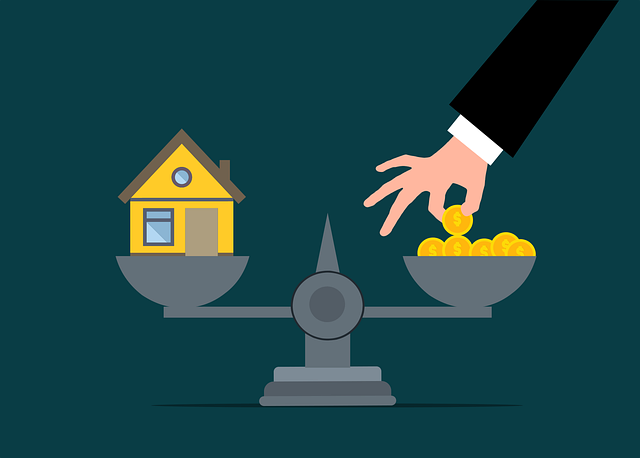
Current Alaska interest rates tend to vary between 6.75%-7.96% (from Bankrate), though these rates are fluid and subject to change. Forbes suggests that the national average interest rates tend to oscillate between 6.55%-7.33%, putting the investment property loan rates in Alaska a little bit higher than the national average.
Alaska Unemployment Rate
Alaska’s unemployment rate has seen fluctuations over the years, influenced by economic conditions and industry-specific factors–including the Covid-19 pandemic. In 2023, the unemployment rate hovers around 4%, reflecting the state’s ongoing efforts to balance a resource-dependent economy with diversification endeavors (from Alaska Department of Labor and Workforce Development).
Alaska Real Estate Market Projections for 2024
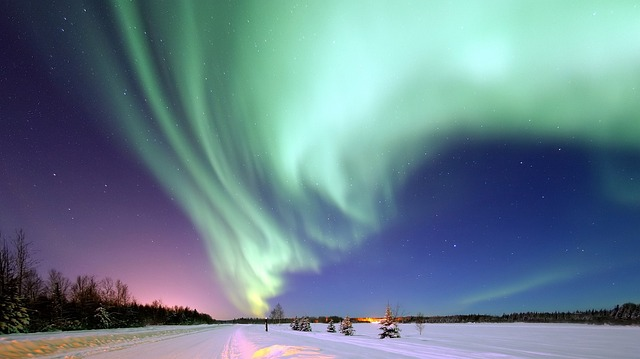
As we approach the cusp of a new year, it’s essential to take a closer look at the prospects of the real estate market in the Last Frontier—Alaska. The state’s unique blend of pristine natural landscapes, economic diversity, and shifting demographics makes it an intriguing market to watch.
Steady Demand for Scenic Properties
Alaska’s breathtaking natural beauty remains a significant draw for both domestic and international buyers. Properties with scenic views, waterfront access, or proximity to national parks are expected to maintain steady demand. Investors should keep an eye on opportunities in this niche market segment, as they often yield higher returns.
Urban and Rural Divide
The divide between urban and rural real estate markets is likely to persist. Urban areas like Anchorage and Fairbanks will continue to see stronger property values, driven by job opportunities, amenities, and a concentration of services. In contrast, rural areas may face challenges related to population decline and limited infrastructure development, impacting property values.
Economic Diversification
Alaska has been actively working to diversify its economy beyond oil and gas, which has historically dominated the state’s financial landscape. The growth of industries like healthcare, tourism, and technology may lead to increased demand for residential and commercial properties in urban centers. Investors should consider areas with a strong economic outlook and diverse employment opportunities.
Climate Change Considerations
Alaska is at the forefront of the impacts of climate change, with rising temperatures, melting permafrost, and coastal erosion. These environmental challenges can have significant effects on real estate values and insurance costs. Homebuyers and investors should carefully evaluate properties in vulnerable areas, considering long-term resilience and sustainability.
Investment in Eco-Friendly and Sustainable Housing
With the global emphasis on sustainability and green living, eco-friendly and energy-efficient properties will continue to gain popularity. Buyers are increasingly seeking homes that reduce their carbon footprint and lower utility bills. Real estate developers and investors should explore opportunities in eco-friendly construction and retrofitting projects.
Rental Market Opportunities
The rental market in Alaska is expected to remain robust. An influx of new residents, particularly young professionals and seasonal workers, creates a demand for rental properties. Investors might consider investing in multi-unit properties, short-term rentals, or apartments in areas with growing employment opportunities.
Technology and Remote Work
The rise of remote work has had a significant impact on real estate markets worldwide, including Alaska. Many people are now choosing to work remotely, making location less of a constraint when purchasing a home. This trend might lead to increased interest in homes in rural or suburban areas, away from urban centers.
Mortgage Rates and Federal Policies
Mortgage rates are subject to change based on national and global economic conditions. Federal policies and interest rate fluctuations can influence affordability and purchasing power. Prospective homebuyers and real estate investors should keep a close watch on these external factors when making decisions.
Long Term Rental (BRRRR)

The BRRRR (Buy, Rehab, Rent, Refinance, Repeat) real estate investment strategy has gained widespread popularity among savvy investors seeking long-term wealth-building opportunities. This strategy combines the benefits of acquiring distressed properties, renovating them, renting them out, refinancing to recoup invested capital, and then repeating the process to maximize returns. In this comprehensive guide, we’ll delve into the BRRRR strategy, its key components, the step-by-step process, and the potential benefits and challenges it offers to investors.
Understanding the BRRRR Strategy
The BRRRR strategy is designed for investors looking to create a portfolio of long-term rental properties. It allows investors to use leverage to acquire multiple properties while recycling capital and generating a steady stream of rental income. Before diving into the strategy’s details, let’s break down its key components.
The BRRRR Process – Step by Step
- Buy: The first step in the BRRRR strategy is to identify and purchase a distressed or undervalued property. Investors often seek properties that require significant renovations but have the potential to appreciate in value.
- Rehab: Once the property is acquired, the investor proceeds with the renovation phase. Renovations can range from cosmetic improvements to major overhauls, with the aim of increasing the property’s value and appeal to potential tenants.
- Rent: After completing the renovations, the investor rents out the property. The rental income is a vital part of the strategy, as it covers expenses and provides a steady source of cash flow.
- Refinance: Once the property is rented and generating income, the investor can refinance the property to pull out a portion of the capital invested. This step is crucial because it allows the investor to recover their initial investment, reducing the financial risk.
- Repeat: With the capital returned through refinancing, the investor can repeat the process, acquiring and renovating additional properties. The goal is to steadily build a portfolio of rental properties, each contributing to long-term wealth.
Benefits of the BRRRR Strategy
The BRRRR strategy offers several advantages for real estate investors:
- Leverage: By using financing to acquire properties, investors can control a more substantial real estate portfolio with less of their own capital.
- Cash Flow: Rental income provides a reliable source of cash flow, helping to cover expenses, mortgage payments, and generate profits.
- Appreciation: Renovations and improvements can increase the property’s value, allowing investors to benefit from appreciation over time.
- Portfolio Diversification: The ability to acquire multiple properties diversifies the investor’s real estate portfolio, reducing risk.
- Wealth Building: Over time, the BRRRR strategy can lead to the creation of substantial wealth through property appreciation, equity building, and rental income.
Challenges of the BRRRR Strategy
While the BRRRR strategy offers numerous benefits, it also comes with certain challenges:
- Market Risks: Real estate markets can fluctuate, impacting property values and rental demand.
- Renovation Costs: Renovations may exceed budget estimates, reducing potential returns.
- Financing Risks: Dependence on financing can pose risks if interest rates increase or financing is not readily available.
- Management: Active management of multiple properties can be time-consuming and may require professional property management services.
Top 7 Best Real Estate Investment Markets in Alaska
1. Delta Junction, AK
Delta Junction, located in the Interior region of Alaska, offers an attractive real estate investment landscape. Known for its scenic beauty, this area appeals to outdoor enthusiasts and tourists. Real estate investors can explore opportunities in vacation rentals, cabins, and lodges, as well as properties with pristine views of the surrounding wilderness. Delta Junction’s strategic location along the Alaska Highway also makes it a significant transit point, increasing the demand for housing and commercial properties.
2. North Pole, AK
North Pole, a charming town near Fairbanks, not only boasts a whimsical name but also a thriving real estate market. This area is renowned for its festive atmosphere and holiday-themed attractions. Investors can consider properties catering to tourists and year-round residents, such as rental homes and accommodations. With a growing population, North Pole offers potential for residential and commercial real estate investments.
3. Juneau, AK
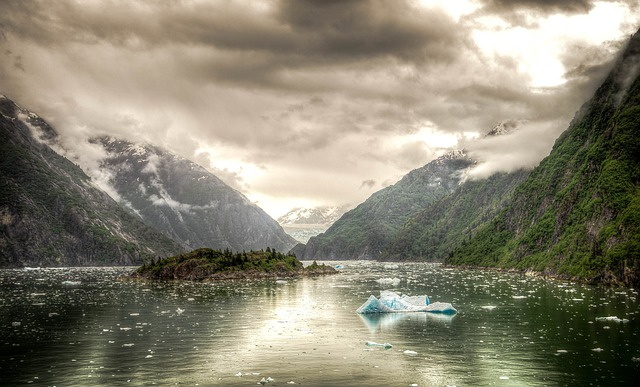
Juneau, Alaska’s capital city, is another top real estate investment market. Its status as the state’s political and economic center provides stability and a diverse job market. Real estate investors can explore opportunities in urban development, apartment complexes, and commercial properties. Juneau’s waterfront locations and stunning vistas make it an attractive destination for luxury properties and vacation rentals.
4. Wasilla, AK
Wasilla, located in Southcentral Alaska, offers excellent real estate investment potential. With a growing population and proximity to Anchorage, this area provides opportunities in both residential and commercial properties. Investors can consider housing developments, rental properties, and mixed-use spaces. Wasilla’s recreational amenities, including fishing and outdoor activities, make it a prime location for vacation rental investments.
5. Anchorage, AK
As Alaska’s largest city, Anchorage represents a diverse and dynamic real estate market. Investors can explore a wide range of opportunities, from multi-family apartments and single-family homes to commercial and industrial properties. Anchorage’s economic diversity, well-developed infrastructure, and access to major transportation routes contribute to a stable and thriving real estate market.
6. Homer, AK
Homer, situated on the stunning Kenai Peninsula, is another promising real estate investment market in Alaska. This picturesque coastal town attracts tourists, artists, and outdoor enthusiasts. Investors can consider properties with waterfront access, vacation rentals, and commercial spaces that cater to the thriving arts and culture scene. The city’s unique character makes it a niche but rewarding investment location.
7. Fairbanks, AK
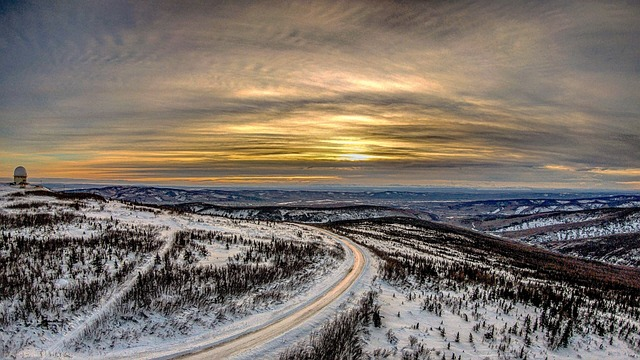
As of 2023, the real estate market in Fairbanks, Alaska exhibits a blend of stability and growth. Fairbanks, located in the Interior region of the state, benefits from a diversified economy, with healthcare, education, and military installations playing significant roles. The city’s real estate market offers a range of opportunities for investors and homebuyers alike. Multi-unit apartment buildings, single-family homes, and commercial properties continue to attract interest, driven by the growing population and the need for housing and business spaces. The stable economic conditions and the unique appeal of the region’s natural beauty contribute to the resilience of the Fairbanks real estate market, making it an attractive destination for those looking to invest in the Last Frontier.
What You Need to Know About Remote Alaska Real Estate Investing
Remote Alaska real estate investing presents a unique opportunity for those seeking to diversify their portfolios and tap into the untapped potential of the Last Frontier. However, it comes with its own set of challenges and considerations. Let’s look at some key factors to consider when it comes to investing in Alaska real estate.
Property Management
One of the crucial aspects of remote Alaska real estate investing is property management. Given the often remote and challenging locations of properties in the state, reliable property management is essential. You should either have a local property management company in place or a well-thought-out plan for maintaining and managing your investment. This includes addressing maintenance issues, dealing with tenant inquiries, and ensuring the property is secure during long periods of vacancy.
Property Values
Remote Alaskan real estate values can be influenced by various factors, including accessibility, scenic views, and proximity to amenities. It’s essential to thoroughly research property values in your chosen location and understand the factors driving these values. Additionally, consider the potential for appreciation, which can be influenced by local economic developments and infrastructure projects.
Short Term Rentals vs. Long Term Rental Properties
When investing in remote Alaska real estate, you’ll need to decide whether you want to focus on short-term or long-term rentals. Short-term rentals, such as Airbnb properties, can be lucrative, particularly in tourist hotspots like coastal towns. On the other hand, long-term rentals offer steady income but may require more commitment and property management. Assess the local demand and your investment goals to make the right choice.
Alaska Airbnb Properties
Airbnb properties in Alaska offer unique potential due to the state’s natural beauty and the growing tourism industry. Areas like Juneau, Homer, and Fairbanks are popular destinations for travelers, making them prime locations for short-term rentals. However, it’s essential to be well-versed in local regulations and permitting requirements for short-term rentals, as these can vary by location and can impact the profitability of your investment.
Protecting Your Purchase
Protecting your remote Alaska real estate investment goes beyond insurance coverage. You’ll need to consider weather-related challenges, such as extreme cold and heavy snowfall, which can impact property maintenance. Additionally, due to Alaska’s unique environment, it’s crucial to safeguard against wildlife intrusion, such as bears or rodents, which can pose threats to your property. Adequate insurance, security measures, and property inspections can help mitigate risks.
Start Your Investment Journey Today with Fractional Real Estate!
Known as the last frontier for its wealth of natural resources and undeniable beauty, Alaska has a lot to offer the interested investor–but they must be well versed in industry trends and local property management techniques. For those looking to expand their portfolio, however, there is a better, modern way to invest in Alaska real estate: share-by-share or fractional real estate investing! Through this medium, investors can carefully balance risk with ROI, sharing the burden of risk with other likeminded investors.
Not sold on Alaskan properties? Consider these resources:
- Best Places to Invest in Portland, Oregon
- Best Places to Invest in Montana
- Best Place to Invest in Minnesota
